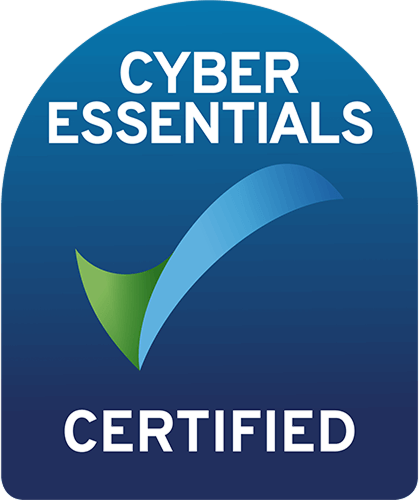1. Short-Term Sickness Absence
Short-term sickness absence should be defined in your sickness absence policy but as a guide it is generally absence due to illness that is less than 2 weeks in length.
- Keep in touch with your employee and agree when contact will be made. It is always best to try to speak to them rather than via text messages.
- If the employee did not notify the Company at all of their absence, or if their reason for absence was not acceptable, follow the procedures under the Unauthorised Absence section.
- If employee does not return to work within 2 weeks, see the Long Term Absence section for details of what to do.
- If the employee has had a number of short-term absences, see the Persistent Short-Term Absence section for details of what to do.
- Always take full notes of return to work meetings in case you need to refer to them at a later date.
Please seek advice from SME HR Consultancy on next steps if you are unsure.
2. Unauthorised Absence
Unauthorised absence is when an employee is absent from work without giving the Company appropriate notice, or when the reason for the absence is not acceptable e.g. they forgot about their shift, they were hung-over etc.
Key Points for handling unauthorised absence:
- Take notes of all phone calls and meetings related to the absence
- At the return to work meeting, give the employee a full opportunity to explain the reasons for their absence.
- Avoid making unsubstantiated accusations. If, however, there is some evidence to suggest that the employee has taken time off work without a proper reason, you should raise this matter with the employee to establish the truth. This should be done in a factual way followed by a general question. For example, you might state that it has been reported that the employee was seen out shopping on the same day that he or she phoned in absent.
You should follow this statement up by asking the employee if they would like to comment on this or explain it.
In this way you can avoid making direct accusations while giving the employee a full opportunity to offer their side of the story.
Failure to Return to Work
If the employee does not return to work and fails to get in contact with the Company, this should be treated as Absence Without Leave (AWOL). If you do not have Company procedures for this, please contact SME HR Consultancy who can guide you through the process.
3. Persistent Short-Term Absence
Persistent short-term absence is usually far more disruptive than long-term absence as it is not as easy to put a plan into place to cover the absences. Action should be taken early on to deal with persistent absenteeism, even if the reasons for the absences seem genuine.
Key Points for Managing Persistent Short-Term Absence
When dealing with persistent short-term absence, it is important to try to find out the root cause of the problem (this may not necessarily be the reason that the employee is giving for their absences). Until the cause is correctly identified, it will not be possible to decide upon an appropriate course of action to remedy it. Typical causes of frequent absenteeism include:
- An underlying medical condition that flares up from time to time;
- An unusually high, but genuine, vulnerability to colds, flu, etc.
- Excessive tiredness, for example because the employee stays out late at night or has a second job;
- Personal or family problems;
- Demotivation;
- Specific problems in the workplace such as:
- Unhappy working relationships or conflict with colleagues;
- Bullying or harassment;
- Perceived bad management or an authoritarian management style;
- The employee’s inability to cope with change or fear of inadequacy;
- The volume of work or pressure of deadlines being too much for a particular employee to cope with.
Be alert to signals that an employee may be suffering from a mental health issue to an extent that they are not coping adequately. Medical certificates that state ‘stress’, ‘depression’ or ‘anxiety’ are often a strong clue that there may be a workplace problem that needs to be addressed urgently.
Conducting Absence Review Meetings
- At the meeting, seek to establish whether there is any underlying cause for the frequent absences and, if so, what, if any, action is needed to alleviate the situation.
- Check whether the employee’s absences could be work related and if so arrange to address the particular problem with a view to removing or reducing the root cause.
- Agree with the employee reasonable targets and time limits for improvements in attendance and ensure that the employee is committed to achieving these targets.
- Inform them that continuing high levels of absence are unacceptable and that if an improvement is not achieved and maintained, then disciplinary action may be taken.
- Consider whether it would be helpful or appropriate to seek medical advice, for example to establish whether the employee has an underlying medical condition that is causing or contributing to the absences. Please contact SME HR Consultancy to guide you through the process if you feel medical advice would be appropriate.
- Confirm the key points of the meeting to the employee in writing and place a copy on their employee file.
- If you feel that the reasons for the absences are unacceptable or untruthful, you may wish to instigate the disciplinary procedure at this stage. SME HR Consultancy can guide you through the next steps.
Using the Disciplinary Procedure to Deal With Persistent Absence
- If, following the absence review meeting, the employee’s attendance has not sufficiently improved, the matter can be dealt with under the Company’s Disciplinary Procedure. Note that a medical report may be required at this stage. We can guide you through a Disciplinary Procedure and the process for requesting a medical report.
- Consider any impact under The Equality Act
- It is possible to take disciplinary action even in circumstances where the employee’s absences have all been for genuine reasons of ill health. The warning will be on the grounds of unsatisfactoryattendance, and not on account of ill health, and this should be made clear in the warning letter. In this way it is clear that the employee is not being blamed for the absences, but is nevertheless being formally warned that that his or her attendance is unsatisfactory from the point of view of the Company
- At each stage of the disciplinary procedure, you should agree reasonable targets and time limits for improvements in the employee’s attendance.
- If the employee’s attendance does not improve sufficiently within the agreed time period, you should progress to the next level of the disciplinary procedure.
- The final stage of the disciplinary procedure is dismissal. We highly recommend that you take advice before dismissing an employee for their level of absence
For further information on how to take disciplinary action, please get in contact with us.
4. Long Term Absence
Long-term absence should be categorised in your sickness absence policy but as a guide, it is usually an absence that lasts for more than two weeks.
There are two stages to managing an employee’s long-term sickness absence. The first is to manage the employee’s absence from work and the second to manage their return to work.
When managing long-term absence, you need to be proactive and the aim should be to support the employee and facilitate their return to work as soon as possible.
To achieve these aims, you should carry out regular reviews of the employee’s length of absence, state of health and readiness to return, as well as whether anything can be done to help them return to work. This should be done in discussion with your absent employee.
SME HR Consultancy can guide you through this process if you would need support.
Overview of Process
Throughout the whole process, you should make sure that the employee sends in regular Fit notes from their doctor to cover their period of absence. You should also make detailed notes of all conversations and meetings with the employee. We can supply you with template documents to support you.
After 2 weeks of absence
Have a supportive telephone or face to face conversation with the employee. The aim of this conversation will be to:
- Discuss their reason for absence.
- Understand when they might be able to return to work.
- Ask how the organisation can support them.
- Take care of any employment concerns they may have (sick pay etc.).
- Discuss any underlying medical condition.
- Ensure they are kept updated, as required with any changes at work.
Write up notes of the meeting and we can provide further advice.
After 4-6 weeks of absence
- If possible, arrange a home visit with the employee to discuss their absence in more detail. The meeting should cover the following points:
- What the illness is and its effect.
- The expected date of return to work.
- The likelihood of being able to return to work in full capacity.
- Whether they could return to work in a reduced capacity (e.g. shorter hours) or on rehabilitation.
- The impact of their absence on those who work with absent employee.
- Whether there is any other position that they would be capable of fulfilling for limited period to assist, with their return to the workplace.
- Explain that a request for Access to Medical Records will likely be made.
Write up notes of the meeting and we can provide further advice.
Keeping in touch with the employee
Throughout the process, it is important that you keep in touch with the employee regularly through either via phone calls or home visits. An employee on long-term sickness absence may feel very isolated and greatly miss the social contact that work usually provides. It will be very important for the employee to know that, even though he or she is off sick, support is available from the Company. Research shows that this is an important factor in the employee returning to work earlier.
You may, understandably, feel uncomfortable about the prospect of contacting an employee who is off sick in case it might be seen as unfair pressure. However, you should also think about how the employee might feel if no contact is made. If in doubt, you could ask the employee whether they would prefer telephone contact, occasional visits at home, e-mail communication or a combination of these.
Keeping in touch personally will also allow you to keep up to date with the employee’s state of health and progress and his or her thoughts on the likelihood of a return to work. This in turn will allow you to organise and maintain temporary cover more effectively.
Possible Next Steps
If the absence continues, SME HR Consultancy can advise you on the appropriate next steps in dealing with the process. This may include the following:
- A medical investigation to understand the true medical position and find out the expected timeframe and the likelihood of the employee returning to work
- Consideration of adjustments to the employee’s role – this could be reduced or different hours, not undertaking certain physical activities such as lifting, etc.
- Consideration of moving them to a different role, either on a temporary or permanent basis. This could be in a different location if appropriate.
- Dismissal on the grounds of capability. This is a last resort and must be managed extremely carefully to avoid potential claims of unfair dismissal and disability discrimination.
SME HR Consultancy can offer comprehensive advice and support on helping you resolve absence cases.
Please get in touch at help@smehrconsultancy or call us on 07852 965609.


